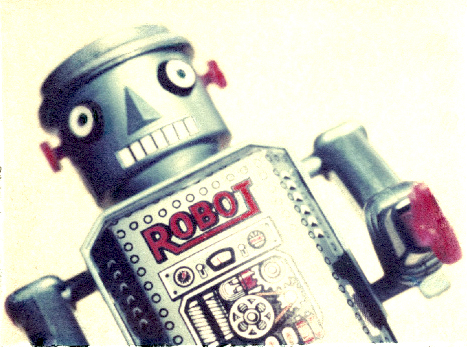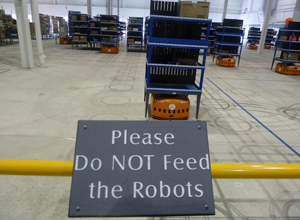 The most important thing we can remember about this generation is that we are having more and more interaction with machines and devices. We all run out to get the latest and greatest new phone available and rich corporations run out to get the latest machine to help their business grow. That means more interactions with machines and fewer interactions with human beings. Humans get sick and need unemployment pay; machines just get thrown out when they are no longer productive.
The most important thing we can remember about this generation is that we are having more and more interaction with machines and devices. We all run out to get the latest and greatest new phone available and rich corporations run out to get the latest machine to help their business grow. That means more interactions with machines and fewer interactions with human beings. Humans get sick and need unemployment pay; machines just get thrown out when they are no longer productive.
We are in an economy where the rich are just getting richer. The most money is being made by the top 10% of people in this country. The stock market is doing great, corporate profits are up and none of that money is trickling down to the workers wages or in getting more people jobs. Instead, companies are putting their money into technology and new machines to automate their production lines as much as possible.
If you lost your white collar job to outsourcing to cheaper wages in India or China, economists call that being the victim of technological unemployment. Now even the talking jobs are going to robotics. Yes, like the IBM machine that won Jeopardy, like Suri that talks to you on your phone, there are more machines talking to people from businesses than people talking to people. With every phone call you make to a successful business now you usually go through some automated operator before you get to talk to someone live if at all.
The age of robots is now out of science fiction novels and old movies like the 1927 classic film Metropolis or the robots that did household help in 1950 TV shows or even the affectionate robot R2D2 in the Star Wars films. Now robots are here but instead of serving us they are competing for our jobs. Now more than ever, rich corporations have the money to invest in the latest greatest machines available for their businesses. Throw out those filthy always sniffling get hurt at work complaining humans. Oil up a new shiny never tiring work alcoholic machine.
Technology and increased automation is the reason people are not getting jobs. Just a few years ago you would have had a human travel agent and a human ticket agent in the airport. Today I book hotels and flights on line and there is a machine in the hotel lobby or at the airport where I can get my flight boarding pass. No human interaction at all needed to travel. Bank tellers are gone to ATM’s and I can buy anything I want on line too so no sales people in a store needed. Even secretaries are gone to voice recognition technology. I will miss the high heels and skits at the offices I visit.
Routine middle skilled jobs that involve relatively structured tasks are the jobs being eliminated the fastest. There are heavily automated warehouses where there are very few or no people that are around. In Devins, Massachusetts, there is a huge distribution center where machines have taken over much of the work of shipping products. There 100 people work alongside 70 robots that do all the heavy lifting, finding stuff off shelves in an area the size of 2 football fields finding over 10,000 products by bar codes. The little monsters attach themselves under a shelf system and bring the stuff from storage to shipping faster and more efficiently than any human.
Bruce Wilkey is the CEO of a company called Quiet Logistics who says his company is part of the new American economy. It is all designed around a small orange efficient robot called the PapelBot. The robots are made by a small company in Boston called Kiva Systems and is becoming a highly successful operation. Gone are the sloppy guys on fork lifts banging into everything and showing up to work late with their ass cracks showing out of their too loose smelly jeans. The little orange robots work hard.
 They are appearing all over the country. In a typical warehouse a worker would have to go to find a product to be shipped, now the product comes right to the shipping area. It is all done with bar coding mathematical algorithms. Customer orders are on computers that transmit to WiFi antennas that direct the robots to the merchandise on movable shelves. It is not just going on in warehouses. El Camino Hospital in Silicone Valley in California has a fleet of robots called Tugs that yields to patients, bring medicines to doctors and nurses , blood samples to the labs, dirty laundry to the washers and delivers meals to rooms. Hey can it get me a beer already? I can’t find a job anyway.
They are appearing all over the country. In a typical warehouse a worker would have to go to find a product to be shipped, now the product comes right to the shipping area. It is all done with bar coding mathematical algorithms. Customer orders are on computers that transmit to WiFi antennas that direct the robots to the merchandise on movable shelves. It is not just going on in warehouses. El Camino Hospital in Silicone Valley in California has a fleet of robots called Tugs that yields to patients, bring medicines to doctors and nurses , blood samples to the labs, dirty laundry to the washers and delivers meals to rooms. Hey can it get me a beer already? I can’t find a job anyway.
No comments:
Post a Comment